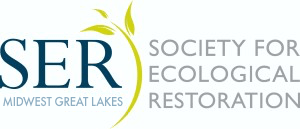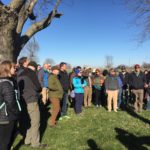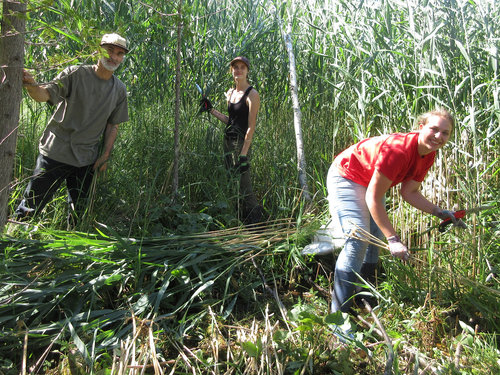SER MWGL Members in Action
SER MWGL Vice-president Joins Practical Farmers of Iowa Habitat Program
Mary Damm, current Vice-president of the Midwest Great Lakes Chapter of Society for Ecological Restoration (SER MWGL) has been named to the steering committee of the Habitat Program of the Practical Farmers of Iowa. The Habitat Program comes as Practical Farmers of Iowa is broadening its definition of farming to include a variety of approaches to land stewardship, including engaging with those of us–like Mary Damm, who is both a farmer and a restoration ecologist–practice ecological restoration.
Practical Farmers of Iowa’s mission is equipping farmers to build resilient farms and communities. Practical Farmers of Iowa is an inclusive organization representing a diversity of farmers. Farmers in our network raise corn and soybeans, hay, livestock large and small, horticultural crops from fruits and vegetables to cut flowers and herbs, and more. Our members have conventional and organic systems; employ diverse management practices; run operations of all sizes; and come from a range of backgrounds. These farmers come together, however, because they believe in nature as the model for agriculture and they are committed to moving their operations toward sustainability.
Before being elected to the Vice-presidental post, Mary was the Indiana representative to the Board of Directors of the Midwest Great Lakes Chapter of SER. Mary divides her time between her home in southern Indiana and her farm, called Prairie Quest Farm near McGregor, Iowa. Mary recently earned her PhD from Indiana University in Bloomington, Indiana, where her research examined the differences in plant community development and fine-scale structure between native tall grass prairie and restored prairies. One observation: Bobolinks and other grassland birds do not next in her prairie (although they next elsewhere on the farm) that was reconstructed in 2008. Mary offers that she is thinking of planting cool-season prairie that could be grazed but also attractive to grassland birds.
Art Exhibit and Wetland Tour Focus of Wisconsin Members Aten and Collins in Spring 2019
Long-time SER MWGL members from Wisconsin, Nancy Aten and Dan Collins operate Landscape of Place, a firm that offers landscape restoration planning and design and land stewardship in eastern Wisconsin. In addition to their restoration work, Nancy and Dan also have two projects this spring that illustrate their artistic, educational, and civic engagement talents. Nancy is also a former SER MWGL board member representing the state of Wisconsin.
Monotypes of Restoration
Through May and June, 2019 Nancy has an exhibit of monotypes at the Steinhauer Trust Gallery at the UW-Madison Arboretum in Madison. The opening reception is this Sunday May 11 from 1 pm to 3:30 pm. Nancy describes her work as ” . . . about the natural places I know, landscapes I work to restore, or about the methods and tools of the ecological restoration work I practice.”
Nancy’s artwork will be on display through June, 2019.
Hike the Wetlands of Bayshore Blufflands
On Sunday May 26, Nancy and Dan will host and co-lead a hike of their personal restoration project, The Bayshore Blufflands on the western shore of Door County, as part of the Door County (Wisconsin) Festival of Nature. The tour will be lead by Tracy Hames, Executive Director of the Wisconsin Wetlands Association. The Door County Festival of Nature runs from May 23 through May 26; click here for program details and registration information.
The tour/hike title is The Wetlands of the Bayshore Blufflands and is event #60 in the program, which described the hike this way:
“On this tour we’ll learn about some of the diverse wetlands of the Door Peninsula and how private landowners can come together to protect and restore these incredible resources. We’ll visit sites above and below the escarpment and discuss karst geology, how water moves through a karst landscape, and what effect it has on wetland ecology. We’ll witness the incredible results of wetland restoration and care, and maybe even pick up a tip or two about how we can care for the wetlands in our communities.”



